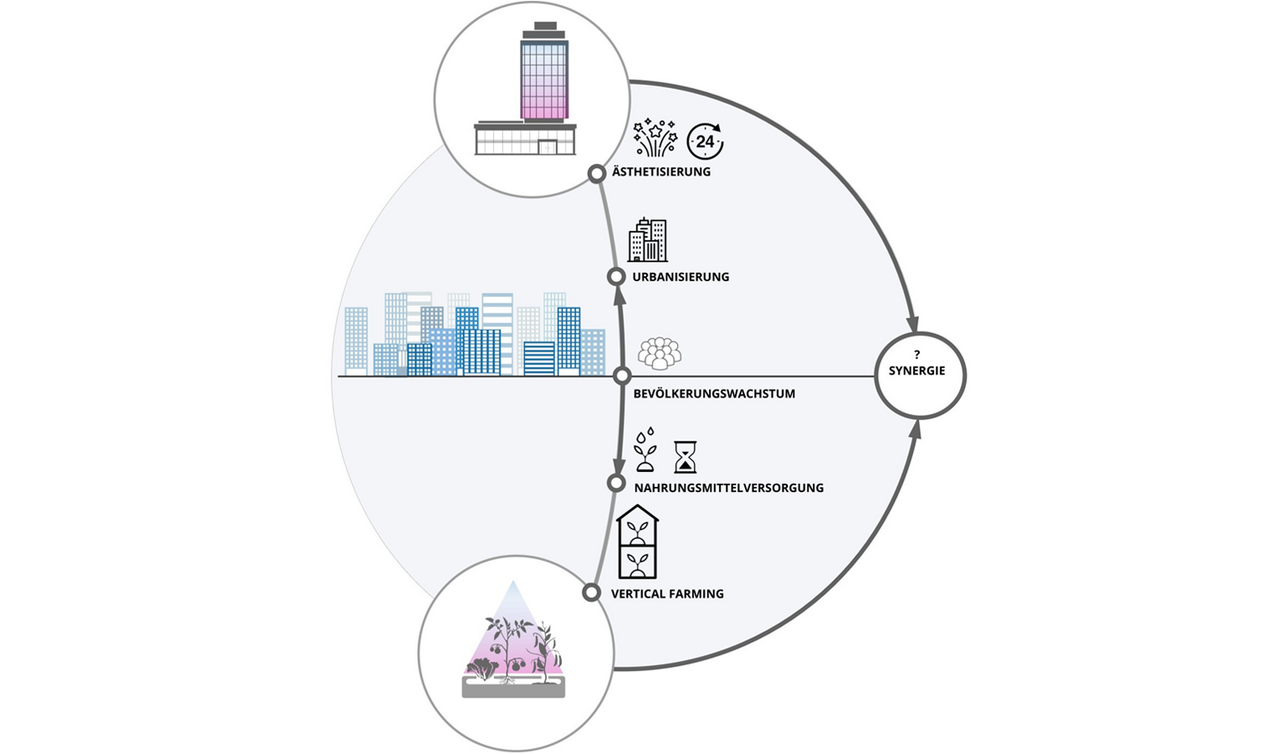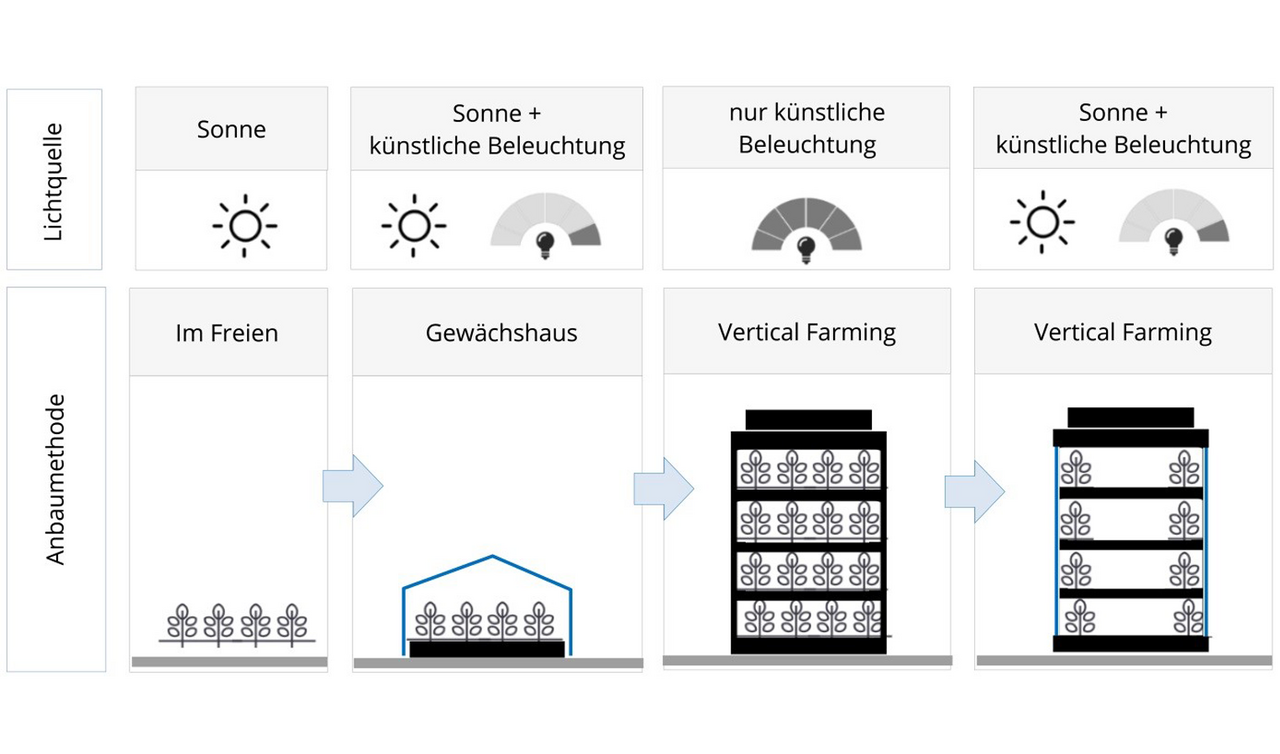Agricultural Lighting Facade

Two of the global challenges which the city of the future will face are the consume of (artificial) light and the food supply. Those two issues have something in common: population growth and urbanization. Projections show that human population is likely to rise to 9,31 billion by 2050. The rapid population growth challenges the global food supply. The two factors - population growth and arable land per capita - are directly related to each other. The possibilities for extending the agricultural areas are limited and innovative solutions for integrating agricultural solutions in urban areas are gaining importance. In the same time light installations and illumination in urban spaces are central aspects of the city marketing and play an important role for increasing the attractiveness of public spaces. Modeling the visual appearance of building facades using artificial light is part of this rising trend. There is a causal relation between the aesthetic appearance of the city and its economic growth and it is expected that this relationship will gain in importance in the future. Modeling the visual appearance of building facades through illumination can be also used for another purpose: cultivation of crop plants supported by artificial light (vertical farming). The subject of the project Agricultural Lighting Façade is designing a building facade able to perform two specific tasks: aesthetic illumination and cultivation of crop plants in controllable climatic environment. Bringing together greenhouse technology, facade technology and lighting design we explore the possibilities for achieving synergies between different applications and uses. An innovative solution enabling the simultaneous coexistence of vertical farming and lighting façade will leverage synergies by creating local, sustainable production of fresh vegetables and contributing to the aestheticization of urban areas in the same time.

Light color, light intensity and light direction are signals for plants, navigating them to control their rate of photosynthesis, vegetation, growth and motion. Light color, light intensity and light direction are for us humans stimuli evoking attention, emotions and associations. If we succeed to match those two worlds we can give a new meaning to the topic of light as tool for city marketing and open a whole new spectrum of opportunities for architects and city planners.
Project Management
M.Sc. Mariana Yordanova
Mariana.Yordanova(at)mediabiose.com
Scientific Committee
Prof. Dr. Ferdinand Ludwig
Prof. Hannelore Deubzer
Prof. Dr.-Ing. Gerhard Hausladen
Publikationen
Yordanova Mariana; Ludwig, Ferdinand; Deubzer, Hannelore; Hausladen, Gerhard: Fassadenbeleuchtung und Vertical Farming aus einer Lichtquelle? Licht, 2018, S. 60 - 63
Yordanova, Mariana; Ludwig, Ferdinand; Deubzer, Hannelore: Lichtzukunft in den Städten: Agricultural Lighting Facade. luxlumina (23), 2018, S. 48 - 51
Yordanova, Mariana; Ludwig, Ferdinand; Deubzer, Hannelore: Lichtkonsum wächst und Vertical Farming wird kreativ an Hauswänden eingesetzt. luxlumina (23), 2018, S. 48 - 51